It’s a Deal!
I’m delighted to announce that THE OTHER SISTER is a Kindle Monthly Deal for February. You can get the ebook for $1.99 AND it has a link to my upcoming suspense tale: A MOTHER’S LIE.
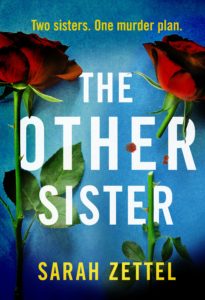
I’m delighted to announce that THE OTHER SISTER is a Kindle Monthly Deal for February. You can get the ebook for $1.99 AND it has a link to my upcoming suspense tale: A MOTHER’S LIE.

THE OTHER SISTER EBOOK is just $4.99 until, but only until Jan. 21! Start your new year with some new suspense!
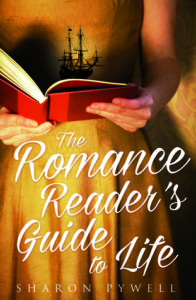 I loved this book. Flat out. Had me at hello.
I loved this book. Flat out. Had me at hello.
I found it when I was on vacation in Atlanta. My husband was at a conference, so The Son and I were doing a bookstore-and-ice-cream tour of the city. Atlanta, BTW, is a fabulous place to do this particular tour. I had heard about this title on the Smart Podcast Trashy Books podcast, and I opened it in the store to see if I’d like it.
Now, I am very leery of the “narrated by a ghost,” trope. It’s gotten a bit old, but in this book it’s handled deftly and with humor, as is everything else. There’s a lot of serious stuff going on, but all is given it’s appropriate emotional weight. The characters are all engaging, the time-shifting narration flows smoothly, and I _adored_ the passages from the romance book THE PIRATE LOVER. Cuz I’m a romance reader too. Sorry not Sorry.
Anyway. To sum up. This was suspenseful but not dark, engaging, and highly entertaining.
Nothing in this world happens in a vaccum. Everything is related, especially when it comes to the desire for resources, and the desire to explore. The events in “An Exchange of Two Flowers,” are actually tied up in the need, and the desire for three plant-based resources. In the novella, I’m focused on two men — Lin Zexu, and Charles Elliot and two plants – tea and opium. But there was a third plant tied into the story. Cotton.
The British had planned to be able to pay for the tea they wanted from China with a trade in cotton, which they’d get from what was becoming their colony of India. But the Americans, with clipper ships and, yes, slave labor, could get American grown cotton to the English mills cheaper, and faster than the British could get it home from India. So, there was not enough profit to buy the tea in the quantities that the English public demanded.
This left the English in a quandry. And they were determined to solve it.
Enter the opium poppy…and so our story begins…
MORE RESOURCES:
Here’s an excellent overview of the history of what the English called “the China Trade” from MIT.
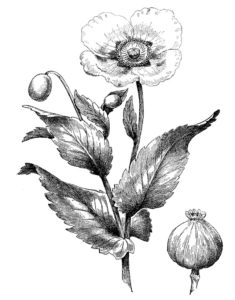
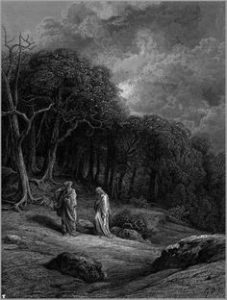 During the Age of Empire, a particular sub-genre of thriller/horror stories emerged in English letters. It involved English travellers finding out that the natives of whatever country they were tramping through might not actually like them.
During the Age of Empire, a particular sub-genre of thriller/horror stories emerged in English letters. It involved English travellers finding out that the natives of whatever country they were tramping through might not actually like them.
This sub-genre includes “The Corsican Sisters,” by Violet Hunt.
The sisters in question are two beautiful peasant girls whisked away from their humble existence by an English family determined to give the girls a glorious season in London. They are then returned to Corsica and the family moves on. The sisters, however, do not, or rather, they cannot.
The story is told from the point of view of Lelis, who is the daughter of the family and a child when the sisters are brought to stay. In the story, she has just gotten married to a childhood sweetheart (and cousin), and has decided that as part of her honeymoon trip she wants to go to Corsica and see the one sister who still survives, and meet the family who have…a rather different view of what happened when the English travellers took their daughters, and then discarded them.
SPOILER ALERT: It does not go well.
This is a very strange, very rambling story It’s much more a nineteenth century story than a twentieth century one. If Dickens drives you to distraction, don’t read this. But, if you’ve got the patience for a long, winding ramble of a story, you will be rewarded. This story has some of the most amazing atmospheric writing and slow, steady mounting creepiness I’ve ever read. Hunt takes the idea of setting as character and dives into it headfirst. The relationship between the narrator and her husband is deeply flawed, but spectacularly drawn with both wife and husband being shown as full, complex and truly believable people.
I need to read more Violet Hunt. And so do you.
Who?
Don’t worry, I’d never heard of her before either, and I have no idea why not.
I started my dive into THE OMNIBUS OF CRIME in the back, in the section labeled: MACROCOSMOS (Stories of the Human and Inhuman) pt. 2: Tales of Blood and Cruelty. Why? I’m not sure, except it sounded good. And of the six stories there, I decided to start with “The Corsican Sisters,” by Violet Hunt.
Who?
Well. Let me tell you.
First of all — this is Violet Hunt here.
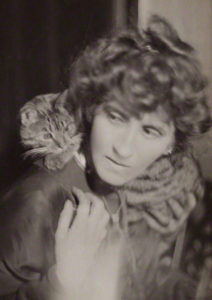
Now, that’s an interesting face. She’s an English writer, and nobody I ever heard of before. But I like her. A lot.
She is, or was, according to this NYT review of her biography the daughter of a pre-Raphealite painter and a novelist. She was friends with Oscar Wilde. She was a feminist of the era of Mrs. Pankhurst. She had affairs with Somerset Maughm and H.G. Wells. She wrote some seriously creepy mysteries, if “The Corsican Sisters” is anything to go by, and apparently also went in for horror and the supernatural.
Um. Whoa.
She’s still in print too. I found her over at Indiebound.org and, yes, she seems to be on Amazon in various forms.
And you can be I’ll be bugging the good folks over at Aunt Agatha’s to find out if they’ve got any of her stuff in house.
NEXT UP: “The Corsican Sisters” A New Review of an Old Tale
So, I found this book in the second hand store.
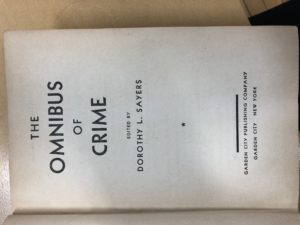
Fifty cents, I kid you not. The intro by the splendid Ms. Sayers alone is worth the price of admission.
I love reading old books. A deep dive into the strange and the obscure is my favorite catnip. Also, as an untrained urbanite, it’s the only kind of archeology I get to do. And as I’m writing madly on my next mysteries and thrillers, I figured getting some deep background on the genre would be useful. But let’s face it, mostly, I just have an impolite passion for old, weird books.
FIRST UP: THE CORSICAN SISTERS by Violet Hunt
Heads up! I will be LIVE at the Writer’s Chatroom this Sunday, Feb. 21 from 7pm to 9pm EST. I’ll be talking about pseudonyms (I have lots), genre writing, good books, bad books, more books, and anything else you guys can think to ask. Hope to see you there!
 Did somebody really try to kill George II when he was still Prince of Wales?
Did somebody really try to kill George II when he was still Prince of Wales?
George II gets overlooked a lot as a do-nothing king, but when he was a prince, he and Princess Caroline were both very popular. With most people. Most of the time. There was this once though…
HISTORICAL SPOILER ALERT!!!!
“Towards the end of September 1716 he made a progress from Hampton Court to Portsmouth, distributing largess copiously all the way, held a review of the troops and inspected the ships at Portsmouth, and was everywhere received with the utmost enthusiasm. He increased his popularity by his energy in superintending the suppression of a fire at Spring Gardens on 3 December, to which he walked from St. James’s Palace in the early morning. He displayed great coolness a few days later at Drury Lane Theatre, when an assassin attempted to enter his box with a loaded pistol, and was only secured after taking the life of the guard in attendance.”
— Dr. Marjorie Bloy, “A Web of English History” quoting James McMullen Rugg, 1889 —